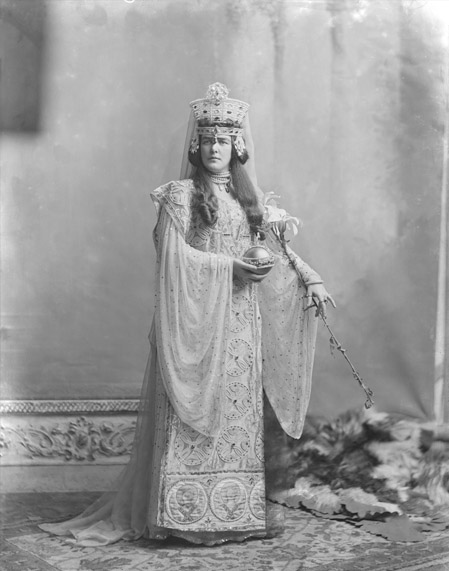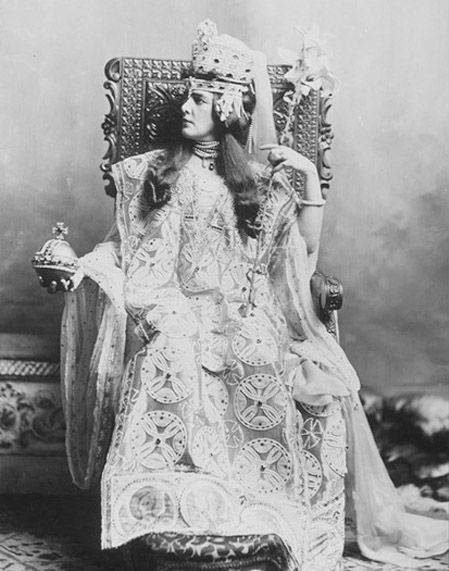
Lady Randolph Churchill
(1854-1921)
as Empress Theodora of Byzantium
Lady Randolph Churchill, née Jennie Jerome, mother of Winston Churchill, was reputed to be "one of the most beautiful of the many beautiful American women who have married Englishmen of rank."
By 1897 she was already a widow and it was said that she had been a mistress of Edward, Prince of Wales. Her discretion about this affair was summed up in her own memoirs:
"...there may be some to whom these Reminiscences will be interesting chiefly in virtue of what is left unsaid."
For the Ball she chose to represent the famously beautiful 6th century Theodora, who had risen, according to the Greek author Procopius, from dancing girl on the game to Byzantine Empress. Gibbon's Decline and Fall of the Roman Empire quotes Procopius in describing one of her lewd practises which involved barley grains, servants and geese.
The story re-entered the popular imagination with Victorien Sardou's play Theodora - a role created by Sarah Bersnhardt in 1884 in a majestically lavish production at the Port St. Martin Theatre in Paris. In order to recreate the opulent costumes, Bernhardt had made a research trip to Ravenna to study and sketch the mosaics of Theodora in the church of San Vitale. Her production of the play was termed by Emile Perrin, director of the Comésdie Française "the greatest effort of mise-en-scène of the century."
 The costume which Lady Randolph wore to the Ball (and which she wore to other costume balls as late as 1911), although doubtless inspired by Bernhardt's success, was designed by the orientalist painter JJ Benjamin-Constant and executed by Worth of Paris.
The costume which Lady Randolph wore to the Ball (and which she wore to other costume balls as late as 1911), although doubtless inspired by Bernhardt's success, was designed by the orientalist painter JJ Benjamin-Constant and executed by Worth of Paris.
Holding an orb and the Empress Theodora's favourite flower - the white lily, and with her tresses undressed, Lady Randolph wears an under-dress of "Eastern fabric" in cream and gold, with draperies from the neck of green and mauve. The hem of the costume has hand-painted angels set in a circle of velvet with beads and gold ruche - a motif which Worth had used in 1891 on the famous "Lohengrin Cloak" commissioned by Dame Nellie Melba and worn in performance before the Emperor and Empress of Russia. The whole effect would have been that of a shimmering Byzantine cloth of gold.
These images were made in the Lafayette studio two weeks after the Ball.

